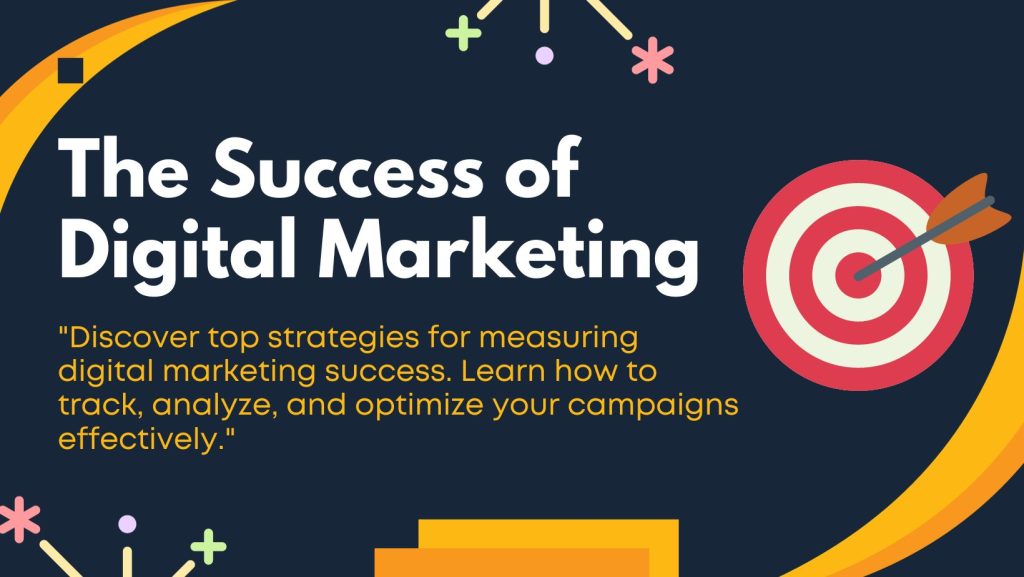In today’s digital age, understanding the significance of measuring the success of digital marketing campaigns is paramount. Without proper measurement, you’re navigating blind.
By gauging the effectiveness of your efforts, you gain valuable insights to make data-driven decisions, optimize your strategies, and ultimately achieve your business goals.
Join us as we explore the importance of this practice and shed light on critical factors that can steer your digital marketing endeavors toward success.
Setting Clear Objectives
In digital marketing, setting clear objectives is your compass to success. It’s not just about having goals; it’s about making them specific and measurable.
These objectives should seamlessly align with your broader business goals, ensuring every marketing effort serves a purpose. A fantastic acronym to remember is SMART – Specific, Measurable, Achievable, Relevant, and Time-bound.
These objectives are the foundation of a well-structured, effective campaign and keep you on the right track to achieve your desired outcomes.
Key Performance Indicators (KPIs)
Understanding Key Performance Indicators (KPIs) is like having a roadmap for your digital marketing success. It’s not just about having metrics; it’s about selecting the right ones that align with your goals.
KPIs vary across different channels – in SEO, it could be organic traffic, while in PPC, click-through rates matter. The key is collecting data and interpreting it to make informed decisions.
Choosing and tracking relevant KPIs will be your secret weapon in gauging the effectiveness of your digital marketing efforts and fine-tuning your strategies for the best results.
Google Analytics and Other Tools
In the digital world, analytics tools are your guiding light. They unveil insights critical for your website’s success. Here’s a step-by-step guide for measuring your campaign success by Google Analytics.
Setting Up Google Analytics
To begin harnessing the power of Google Analytics, follow these simple steps:
- Sign Up: Create a Google Analytics account with your Google ID.
- Property Setup: Add a new property for your website, providing essential details.
- Tracking Code: Obtain and add the tracking code to your website’s header or footer.
- Verification: Confirm the tracking code is installed correctly.
- Configuration: Customize settings, like goals and filters, to align with your objectives.
Measuring Performance with Google Analytics
Once Google Analytics is set up, you can monitor your website’s performance by:
- Website Traffic: Analyze the number of visitors, geographic location, and traffic sources.
- User Behavior: Track page views, bounce rates, and user engagement to understand how visitors interact with your site.
- Conversion Tracking: Set up goals or e-commerce tracking to measure specific actions, like form submissions or product purchases.
- Custom Reports: Create customized reports to focus on specific data that matters to your business.
Conversion Tracking
Conversion tracking is like having a compass for your online success. It’s all about measuring the actions you want your website visitors to take, whether making a purchase, signing up, or any other goal.
You typically place a code snippet on your website to set up conversion tracking on platforms like Google Ads and Facebook Ads.
This code tracks when users complete their desired actions. For better ROI, ensure accurate tracking, set clear goals, and regularly analyze your data to fine-tune your marketing strategies.
A/B Testing and Split Testing
A/B testing, or split testing, is a game-changer in digital marketing. It’s like having a lab for your campaigns, where you compare two versions (A and B) to see which performs better.
The process involves creating two variations of a web page or ad, showing them to different segments of your audience, and then analyzing the results to determine which version yields better outcomes.
Successful A/B testing can be anything from tweaking headlines to testing different call-to-action buttons, all to optimize conversion rates and overall campaign effectiveness.
Return on Investment (ROI)
Calculating Return on Investment (ROI) in digital marketing is like counting your profits. It’s vital because it shows how effectively your marketing efforts generate revenue.
The ROI formula is straightforward: (Revenue – Cost) / Cost. To boost your digital marketing ROI, improve conversion rates, optimize ad spend, and target the right audience.
Regularly assess your strategies, fine-tune your campaigns, and ensure you get the most out of your marketing budget. Maximized ROI means maximized success.
Customer Lifetime Value (CLV)
Customer Lifetime Value (CLV) is like a compass in the digital marketing landscape, guiding your efforts for long-term success. It’s all about understanding the total worth of a customer over their entire journey with your business.
Calculating CLV involves analyzing past customer behavior, purchase history, and future expectations. To boost CLV, focus on creating exceptional customer experiences, retaining existing clients, and nurturing brand loyalty.
By enhancing CLV through effective marketing strategies, you secure current revenue and ensure a prosperous future for your business.
Social Media Metrics
Measuring your social media performance is like steering a ship – it keeps you on course to success. It’s not just about posting; it’s about knowing what works.
Metrics like engagement rate, reach, and conversion rate are your allies. They reveal how your audience responds. To optimize your social media campaigns, pay attention to these numbers.
Create resonant content, schedule posts for peak engagement, and interact with your audience. Using metrics to guide your strategy will help you navigate the ever-changing seas of social media more effectively.
Email Marketing Metrics
Email marketing metrics are your compass in the digital marketing journey. They reveal how your email campaigns are performing and help you make data-driven decisions.
Key metrics like open rate, click-through rate, and conversion rate provide invaluable insights into your audience’s engagement and responsiveness. To boost marketing effectiveness, segment your email lists, personalize content, craft compelling subject lines, and test different elements to optimize your campaigns continually.
By paying close attention to these metrics and best practices, you can achieve higher engagement and better results in your email marketing efforts.
Reporting and Data Visualization
Clear and concise reporting is the cornerstone of effective communication in the digital landscape. It’s not just about the numbers; it’s about conveying insights in an easily understandable way.
To create impactful reports, focus on highlighting key data points and trends. Visual appeal is essential – use charts, graphs, and infographics to make your data more digestible. Consider using data visualization tools like Tableau, Google Data Studio, or Power BI.
This approach ensures that your reports are informative but also engaging and understandable for your audience.
Conclusion
In the digital marketing world, measuring success is your North Star. From clear objectives and crucial KPIs to A/B testing and ROI assessment, these practices empower your campaigns.
Social media and email metrics fine-tune strategies while reporting and data visualization make insights actionable. By embracing these best practices, you’re tracking success and driving it.
Ready to supercharge your digital campaigns? Join us on this data-driven journey and watch your online presence soar. Your success story begins here.
FAQs
What is the best way to measure the success of digital marketing campaign?
The best way to measure the success of a digital marketing campaign is by tracking key performance indicators (KPIs) relevant to your goals, such as conversion rates, click-through rates, and ROI. These metrics provide clear insights into campaign effectiveness, allowing you to make data-driven decisions and optimize your strategies for maximum impact.
What best practices strategy can be identified for successful digital marketing?
For successful digital marketing, prioritize audience targeting and content relevance to engage and convert potential customers effectively. Additionally, continuous data analysis and adaptation are essential to stay ahead in the ever-evolving digital landscape, ensuring your strategies remain effective and results-driven.
How did you measure the success of the campaign?
You can measure the campaign’s success by comprehensively analyzing key performance indicators (KPIs) such as website traffic, conversion rates, and return on investment (ROI). These metrics will allow you to gauge the campaign’s impact, identify strengths and weaknesses, and make informed decisions to optimize results.





